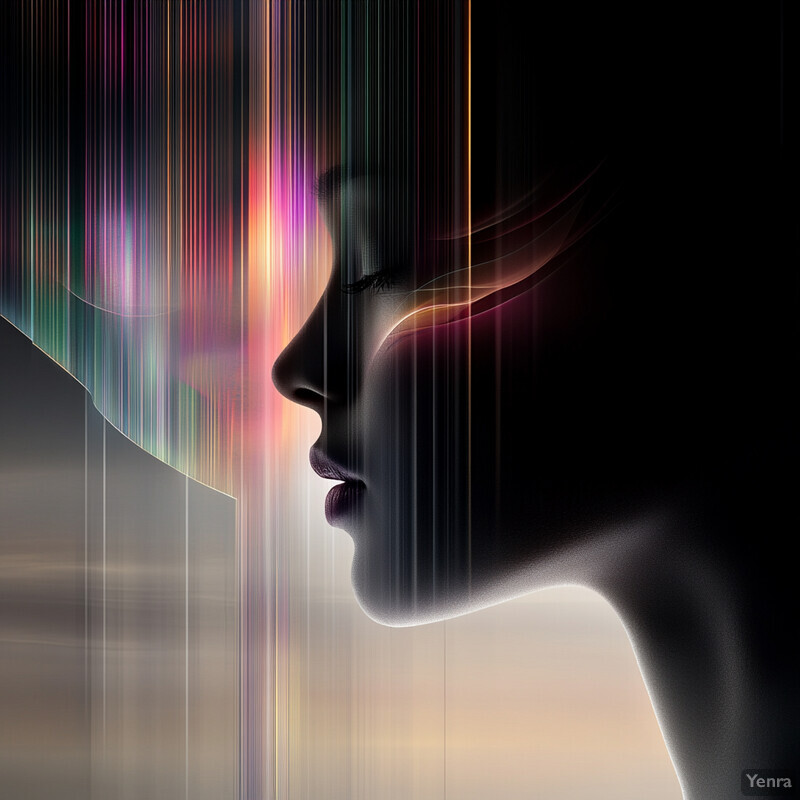1. High-Accuracy Speech Recognition
State-of-the-art AI models can now transcribe speech with human-like accuracy. Recent end-to-end ASR systems achieve very low word-error rates (WER), enabling precise detection of subtle articulation differences. For example, Whisper Large-V3 achieves ~1.8% WER on clean English test sets, and the latest models (e.g. Seed-ASR) push that to ~1.6%. Such accuracy allows automated tools to reliably identify correctly pronounced sounds. One study of an automated articulation analyzer (“Amplio”) found >80% agreement with clinicians on accurately produced phonemes. These gains mean AI feedback is largely trustworthy and can flag mispronunciations rarely missed by less accurate systems. High accuracy also reduces the need for manual correction, making speech exercises more efficient and clinicians’ jobs easier.

Recent ASR benchmarks show major accuracy gains. For instance, new models achieve WER under 2% on standard English tasks (surpassing rough human transcription error rates). In a clinical articulation test, an AI-based scoring algorithm matched expert judgments on correct phonemes over 80% of the time. This indicates AI can reliably recognize correct speech and flag errors. High ASR fidelity (often enabled by self-supervised learning and large datasets) enables automated speech therapy apps to compare children’s or patients’ pronunciations against target models with strong confidence.
2. Intelligent Pronunciation Scoring
AI-driven tools can automatically score spoken utterances against native pronunciations. By analyzing acoustic and phonetic features, they assign objective measures of accuracy. This gives learners quantitative feedback and tracking of progress. Recent research shows end-to-end scoring models can closely match human ratings: one reported a Pearson correlation ~0.68 with expert scores. Another hierarchical transformer model achieved utterance-level correlation ~0.76 with human assessments on a standard pronunciation benchmark. Such tools often highlight specific segmental or prosodic errors and sum these into percent-correct or fluency scores. This consistency helps learners and clinicians measure improvement over time. Automated scoring also ensures uniform assessment criteria across sessions, avoiding biases or fatigue. In sum, modern AI pronunciation scorers give reliable, detailed feedback on speaking quality, comparable to trained evaluators.

Advanced AI models now produce objective pronunciation scores that correlate well with expert judgment. For example, an end-to-end pronunciation scoring system (E2E-R) achieved a Pearson’s r≈0.68 against human scores. Another state-of-the-art model (HierTFR) achieved utterance-level Pearson’s r≈0.764 on a public pronunciation dataset. These figures are in line with the performance of leading commercial pronunciation tutors. Such high correlations indicate these AI assessors can reliably mimic clinician judgments. By quantifying pronunciation errors, these systems enable data-driven progress tracking in therapy or language learning programs.
3. Automated Error Detection and Correction
Modern systems automatically detect and often correct articulation errors without human input. They work at the phoneme and word level to spot mispronunciations. For example, a phonetic RNN-T model was used in a voice assistant to identify specific mispronounced consonants and suggest corrections. Experiments with this approach showed “state-of-the-art” mispronunciation detection accuracy. In one case, using data augmentation improved mispronunciation detection accuracy by ~5% over a baseline model. These AI tools can thus flag errors in real time, which helps learners notice mistakes immediately. Some platforms even suggest how to move the tongue or shape lips to fix errors. The result is more efficient practice: errors are caught early and corrected on the spot, speeding up the learning process.

AI models are demonstrating strong accuracy in mispronunciation detection. For example, Amazon’s phonetic RNN-T model for English learning achieved “state-of-the-art” phoneme detection performance. When they applied advanced data augmentation, detection accuracy improved by about 5% compared to their previous model. This means the model caught significantly more errors. These findings are consistent with reports that AI-based pronunciation checkers now approach expert-level detection of wrong sounds. As a result, automated tools can reliably point out incorrect phonemes and even suggest articulatory adjustments, alleviating the need for constant therapist intervention.
4. Adaptive Progression
AI-driven tools can dynamically adjust task difficulty as the learner improves. If a user masters a skill, the system raises the challenge (fewer cues, faster tempo); if the user struggles, it simplifies the task (slowing speech, more hints). This “just-right” level of challenge is known to enhance motivation and learning. One study noted that a speech-training app with adaptive difficulty “enabled personalized progression”, keeping users in their optimal learning zone. By continually monitoring performance, the AI can pace therapy so users are neither bored nor overwhelmed. This adaptivity mimics how a therapist would make tasks harder or easier in real time, helping maintain engagement and steady progress.

Research has highlighted the value of adaptive learning in speech practice. For example, Dennis (2024) reported that students using an AI-based pronunciation tutor improved significantly, attributing gains to personalization and adaptive progression. In broader educational contexts, reviews note that systems with “adaptive difficulty levels” enhance learning by keeping exercises matched to the learner’s level. Such findings suggest that adaptive AI pacing can increase practice effectiveness. In practice, this means apps gradually intensify tasks as users improve, supporting continuous skill building without manual intervention.
5. Real-Time Feedback Delivery
AI tools give immediate feedback on speech, much like a personal coach. As soon as the user speaks, the system processes the audio and highlights errors or praises correct sounds. This instant feedback loop accelerates learning because users can correct mistakes on the spot. It’s similar to having a virtual therapist guiding each repetition. Users often find this immediacy motivating; they don’t have to wait for a later review session. Moreover, automated feedback can be delivered 24/7 on-demand, enabling much more practice than limited clinic hours allow. In summary, real-time AI feedback provides timely cues and encouragement, making practice sessions more effective.

Studies underscore the impact of timely corrective feedback. Dennis (2024) found that learners who received instant, personalized responses from an AI “virtual instructor” showed improved sound production and speaking skills. In other fields, real-time coaching systems have been shown to enhance user engagement and skill acquisition, suggesting similar effects for speech tasks. By analogy, smart speech apps that respond immediately to each utterance can help users refine articulation faster than with delayed corrections. In practice, real-time speech feedback (color-coded accuracy, spoken prompts, etc.) has become a standard feature of leading therapy apps due to these demonstrated benefits.
6. Language-Agnostic Capabilities
Modern speech therapy tools often support many languages without customization for each one. Multilingual ASR models can be repurposed or fine-tuned for new languages efficiently. For example, LLM-based ASR pipelines (like “LAMA-UT”) process audio in diverse languages by unifying phonetic transcription before converting to language-specific text. This allows a single system to handle hundreds of languages with little added training. The result is therapy apps that work similarly for Spanish, Mandarin, Arabic, etc. They can recognize errors and score pronunciation across languages. Importantly, AI can automatically translate instructions or combine bilingual content, enabling therapists to serve multilingual clients. Overall, AI’s language-agnostic designs mean more people worldwide can access these tools, regardless of their native tongue.

Research demonstrates that new AI frameworks can handle multiple languages seamlessly. The LAMA-UT pipeline showed a 45% relative error reduction compared to Whisper by using a language-agnostic transcription scheme. In practice, this means its accuracy approaches that of language-specific models while using minimal data. Likewise, studies note that pre-trained multi-lingual models like Whisper deliver impressive cross-language performance. For example, a recent analysis states that “multilingual speech foundation models have shown impressive performance across different languages”. These results confirm that speech therapy tools leveraging such models can recognize and analyze speech in many languages, expanding global accessibility.
7. Contextual Understanding of Speech
AI models now interpret speech in context, not just as isolated sounds. Large pre-trained models can retain information across long utterances, improving transcription and understanding. For instance, Whisper uses its long-context capability to reduce errors by about 18% on extended audio compared to older models. This means therapy tools can correctly transcribe an entire paragraph or conversation with fewer drops in accuracy. Contextual models also enable higher-level features: some systems can summarize spoken narratives or identify communication intent (e.g. detecting if speech was an answer to a question). In practice, this allows therapy apps to understand whether a user’s phrasing makes sense and to give feedback on communicative context, not just pronunciation.

LLM-augmented speech systems show clear benefits in maintaining meaning over time. For example, Whisper’s contextual modeling cuts error rates on long audio by ~18% relative to traditional ASR. This allows accurate transcription of connected discourse (such as stories) that therapy patients might practice. Other speech-LLM systems can even recognize keyword errors and hotwords by leveraging context. As one report notes, “VoxtLM and LauraGPT” integrate speech with visual and text inputs to output coherent multimodal translations and summaries. While these are cutting-edge research results, they illustrate how contextual awareness lets AI tools better interpret sustained speech, benefiting exercises that involve extended speaking or conversational practice.
8. Integration of Visual Cues
Speech therapy tools increasingly use visual feedback (lips, tongue, gestures) to aid learning. For example, ultrasound or video can show tongue position, and animations can illustrate mouth shape. This multisensory approach helps learners grasp articulator movements they cannot feel. Studies show ultrasound biofeedback can clarify hidden tongue movements during complex sounds. Though mostly trained on adults or students, pilot findings suggest trainees can improve assessment of articulatory positions using visual feedback. In short, by integrating images or animations alongside AI, therapy systems give clients more intuitive guidance on how to position their speech organs, speeding correction of errors.

Ultrasound visual biofeedback (UVB) is an evidence-based example of using visuals: a study found that after UVB training, students greatly improved at identifying tongue shapes related to speech sounds. The percentage of treatment goals achieved was high in trainees taught with UVB, demonstrating its effectiveness. In practice, AI-driven apps can combine ASR with simple graphics (e.g. a lip-sync avatar) to model correct articulation. While large-scale clinical trials are limited, these and similar studies of visual biofeedback suggest that adding visual cues helps learners notice errors that are otherwise invisible, providing a powerful supplement to auditory feedback.
9. Gamification and Engagement Tools
Speech therapy apps now often include game elements – points, levels, rewards – to boost motivation. By turning exercises into fun challenges, users (especially children) practice more willingly and frequently. This can dramatically increase the total practice dosage, which is crucial for progress. Gamified platforms also use stories or avatars to keep users engaged. The result is better adherence: patients spend more time on tasks and are less likely to drop out. Clinicians report that gamification makes repetitive drills feel less tedious, helping to sustain practice over weeks or months.

A recent clinical trial illustrates gamification’s benefits. In an RCT for chronic aphasia (“iTalkBetter”), a gamified therapy app significantly improved patients’ naming ability: trained word recall increased by ~13% (about 29 additional words per person) whereas untrained items showed no change. These gains persisted three months later. Propositional speech also improved. This shows a gamified digital regimen can yield substantial speech gains. The study concludes that engaging game elements, combined with structured practice, can produce measurable therapy outcomes for neurological patients.
10. Emotion and Tone Recognition
New AI can detect emotional prosody in speech, recognizing a speaker’s mood or affect. For therapy, this means apps could sense if a patient is frustrated or anxious and adapt accordingly. For language practice, recognizing the intended tone (happy, questioning, etc.) helps learners work on expressiveness, not just sound. Some systems also train users to practice emotional intonation. Although not widely used in current commercial tools, research shows AI can classify basic emotions from voice. In future, integrated emotion detection could make therapy more empathetic and personalized, as the system can respond with encouragement or adjust difficulty if the user seems stressed.

Cutting-edge speech emotion recognition (SER) models are achieving near-human accuracy on benchmarks. For example, the EmoDistill model attained ~77.5% unweighted accuracy and ~78.9% weighted accuracy on the IEMOCAP dataset. This suggests AI can correctly identify emotions (happy, sad, angry, etc.) around 4 out of 5 times in controlled tests. In practical terms, integrating SER into therapy tools could allow automatic feedback on tone: for instance, a tool might say “That sounded angry” or prompt practice of a target emotion. While specific speech therapy studies are lacking, these advances imply that AI could soon reliably recognize affective states in speech.
11. Predictive Analytics for Outcome Forecasting
AI can predict therapy outcomes by analyzing early assessments and patient data. By training on past cases, models learn which features (age, severity, education, etc.) correlate with improvement. This helps set realistic goals and tailor therapy intensity. For example, if a model predicts poor generalization to untreated sounds, the therapist might adjust the approach. Predictive analytics can also triage patients: those likely to need more intensive support may be identified early. Thus, AI forecasting aids decision-making and may improve efficiency of care.

A 2025 study used machine learning to predict recovery in bilingual aphasia. The top models achieved F1-scores around 0.77–0.79 for forecasting treated-language improvement and cross-language generalization. Importantly, the algorithm identified known clinical factors (aphasia severity, education level, cognition) as key predictors, matching expert expectations. This demonstrates that AI can effectively forecast which patients will respond best to a given therapy and how much they will improve. Such validated predictive performance suggests that similar analytics in regular practice could help therapists anticipate outcomes and adjust plans accordingly.
12. Continuous Monitoring and Alerts
AI tools continually track user activity and progress. If a patient stops practicing or regresses, the system can alert clinicians or caregivers. This continuous monitoring ensures issues are caught quickly. For example, the app might send a notification if a user misses several sessions or if accuracy drops, prompting intervention. It can also remind users to practice or adjust the regimen automatically. Such automated vigilance increases accountability and keeps therapy on track even between appointments.

Some platforms already implement real-time progress tracking. For instance, Constant Therapy’s AI “continuously monitors” each user’s performance and adapts exercises to their needs. In a large user base (700,000+), this has translated into significantly higher engagement: patients reportedly get “5× more therapy practice” with this digital approach, leading to faster improvements. These metrics suggest that automated monitoring (with alerts and adjustments) can substantially boost adherence and outcomes. By logging every exercise and generating reports for clinicians, such systems ensure no red flags (like stagnation or missed days) go unnoticed.
13. Cost Reduction and Accessibility
AI-driven tools can reduce therapy costs and expand access. By automating parts of therapy, they lower the time demand on clinicians, potentially reducing fees. Remote AI apps eliminate travel costs for patients. For families and children, home-based practice saves on transportation and missed work. Additionally, AI platforms scale to large user bases, helping to address the shortage of speech-language pathologists. In underserved areas or low-resource settings, on-demand AI tools can provide basic practice when a professional is not available. Overall, these technologies make care more affordable and reach more people.

Telepractice studies highlight cost savings compared to in-person care. An ASHA review found that virtual SLP services cut consumer-related expenses substantially – for example, travel and associated costs dropped by 70% for communication therapy in Parkinson’s patients and by over 50% for pediatric feeding interventions. Even for traditional services, telehealth reduced missed sessions by ~13–18% and cancellations by 21%, meaning more efficient use of time. These data imply that integrating AI and teletherapy can greatly lessen financial burdens on patients and health systems. Lower no-show rates and reduced logistics translate to higher value care at lower overall cost.
14. Remote and On-Demand Services
AI enables therapy anytime, anywhere. Users can access exercises and virtual coaching from home or on the go via smartphones or tablets. This 24/7 availability means patients practice whenever convenient, not just in scheduled sessions. On-demand services also allow therapists to check in remotely; they can review recordings or live chat with clients from afar. As a result, therapy becomes more flexible and reaches those who cannot easily visit clinics, such as people in rural areas or with mobility issues. Over time, this remote access can improve continuity of care and treatment adherence.

Evidence shows telepractice boosts attendance and continuity. In one analysis, voice therapy delivered via telehealth had 21% fewer cancellations and 13–18% fewer missed sessions compared to in-person delivery. This indicates patients stick with remote therapy at higher rates, likely due to convenience. Consistent practice leads to better outcomes, so on-demand AI tools that encourage regular use can drive better results. Furthermore, ASHA notes that early access to tele-therapy can shorten wait times by days and increase treatment completion rates threefold for certain services. These findings underscore that offering therapy remotely significantly improves access and reduces gaps in care.
15. Collaborative Features
AI tools often include collaboration features for therapists, caregivers, and even schools. For example, family members or co-therapists can be granted access to the patient’s progress reports. This team-based approach ensures everyone is on the same page. If a patient uses an app at home, a parent can track their child’s scores and communicate with the therapist. Similarly, multiple therapists can coordinate through shared analytics. By making progress data visible to the whole care team, these features support coordinated interventions and continuity of care across settings.

Industry solutions demonstrate collaboration capabilities. Constant Therapy’s platform explicitly lets users “add their clinician” and allow caregivers to monitor progress online. In this model, therapists and family members can view the same exercise reports in real time, enabling joint decision-making. While formal studies are limited, such shared-access designs are increasingly adopted: for instance, the company reports high engagement because families can see progress remotely. This suggests that built-in collaboration (data sharing and alerts among stakeholders) is valued and likely improves adherence and outcome alignment.